Pimples on the skin cause discomfort to a person. This trouble occurs on the face, body, and scalp. Rashes on the head can appear in men, women and even children, regardless of age. In representatives of the stronger sex, this problem is diagnosed more often. Let's consider what pimples on the head in the hair of men are, the causes and treatment of this pathology.
Why does a rash form in the hair?
Pimples on the scalp are formed under the influence of various factors. To successfully deal with them, you need to determine the reasons that caused them.
Most often, a rash on the head under the hair causes:
- Stress . This phenomenon affects people of all ages - infants, schoolchildren, teenagers, young and elderly men.
- Wrong selection of shampoo . If you wash your hair with shampoo designed for a different skin type, you will experience rashes, itching and dandruff.
- Wearing a headdress made of artificial materials , under which the skin sweats, can cause rashes on the scalp in men.
- Irregular, too infrequent hair washing .
- Digestive diseases .
- Purulent acne on the head can occur due to skin lesions , microcracks, scratches into which pathogenic bacteria enter.
- Pimples can appear under the hair when infected with fungi or mites . Such lesions are often itchy and accompanied by dandruff.
- Small pimples that appear on the scalp under the hair may be a sign of an allergic reaction. for food, medicine or cosmetics;
- Excessive oily skin contributes to the appearance of rashes due to hormonal imbalance in the body or heredity.
- The problem can be caused by a long-term deficiency of vitamins or microelements .
- Skin health is worsened by bad habits and poor diet. . Pimples on the head in the hair can appear in an adult due to the abuse of fast food, cigarettes and alcohol.
- The sudden appearance of rashes may indicate the development of some disease , such as chickenpox, eczema or psoriasis.
There are many causes of skin diseases. To determine how to get rid of them, it is important to understand why acne appears on the head.
Types of acne in hair
Hair rashes can manifest themselves in different ways. Their appearance depends on the reason why acne appeared.
Most common small red pimples . May be caused by an allergen or an incorrectly selected cosmetic product. If they don't hurt or itch, you can wait a while. These rashes often go away on their own if the irritating factor is removed.
If the rash starts to itch , then first of all you need to check your head for lice infestation. When this insect bites through the skin, pimples form at the site of the lesion, painful when touched. In addition to pediculosis, such lesions can be caused by allergens, contact with headwear, and fungi.
A particular nuisance is the recurring painful pimples on the scalp. These are cysts, nodules, pustules. Usually the mechanism that “starts” the process is banal combing. At the site of scratching, a bacterial infection is activated and penetrates deep into the tissue. Under the influence of pathogenic bacteria, boils filled with pus are formed.
Often hair forms acne , or internal acne. Their cause is blockage of the sebaceous gland ducts. They rarely become inflamed and do not cause much discomfort.
What to do if a rash appears on your head?
Pimples on the scalp in men's hair can be caused by various reasons, and they should be treated immediately. The sooner measures were taken to get rid of them, the easier it is to achieve a positive result.
Acne treatment should start with the following:
- Adjust nutrition . It is necessary to review the daily menu, increase the amount of foods rich in vitamins and microelements (vegetables, fruits, cereals, dairy products). The consumption of sweets, canned food, salty, spicy and smoked foods, and baked goods should be reduced as much as possible.
- Say goodbye to bad habits . When scalp hair acne becomes a problem, alcohol and nicotine will make it worse and reduce the effectiveness of treatment.
- Get rid of the allergen , if there is a suspicion that acne on the head appeared precisely for this reason. This applies to both food and medicines, shampoos and conditioners.
- Visit a dermatologist , if the rashes have not decreased. Pimples in the scalp and hair in men have different causes; effective treatment can be prescribed only after a thorough diagnosis of the problem.
Hair rash treatment methods
How to treat acne on the head and hair? The treatment regimen should be determined individually by a dermatologist. Drugs and procedures are selected taking into account the factor that caused the disease.
Let's look at the main tips on how to get rid of acne on your head:
- Choose the right hair care products . Men's acne shampoo containing salicylates dries the skin well and helps to quickly get rid of festering lesions. Preparations with selenium sulfide will help fight itchy rashes. Dandruff can be cured by using antifungal additives in hair washes. Tar soap or shampoo will eliminate the symptoms of seborrheic dermatitis.
- Use hair styling products carefully . They can clog pores, dry out the skin or, conversely, make it oily, contributing to rashes, dandruff and itching.
- Pimples on the scalp in the hair of women and men cannot be treated with medications containing benzoyl peroxide . This substance is successfully used to combat acne on the body. But upon contact with hair, it worsens its condition, making it brittle, damaging and discoloring.
- Cut your hair shorter . The longer the hair, the more difficult it is to keep the scalp healthy. Their constant contact with the skin on the back of the head and temples increases sweating and promotes the growth of bacteria that cause inflammation and small pimples.
- Don't squeeze out inflammation . This is how the infection spreads and becomes wider.
When rashes and inflammations on the skin occur bacterial in nature , the doctor may prescribe antibiotics (erythromycin, azithromycin, tetracycline, etc.) both in tablets for internal use and in the form of acne ointments, gels, solutions for topical treatment. Used in combination with antibiotics to treat skin diseases antifungal agents .
In cases where skin problems are only a consequence, but the cause is gastrointestinal disease , the treatment will be long and includes preparations for improving digestion, normalizing microflora, enterosorbents .
To deal with the consequences allergies the doctor will prescribe antihistamines (Telfast, Zodak, Loratadine, etc.). To ensure recovery occurs as quickly as possible, supplements that normalize the functioning of the nervous system (Glycine, Persen, Novo-passit, tinctures of soothing herbs) may be prescribed.
If the skin rash is severe and does not respond to other types of treatment, your doctor may recommend isotretinoin. This drug is used to combat acne simplex, seborrheic dermatitis and rosacea.
Cure acne, the cause of which lies in hormonal disorders , will help antiandrogens . If it is established that there is a deficiency of nutrients in the body, treatment consists of taking vitamin complexes, brewer's yeast, and microelements (selenium, zinc, calcium).
Local preparations have less pronounced side effects, so for mild forms of the disease they are prescribed more often. These are antibiotics in the form sprays , gels (active ingredient erythromycin, clindamycin), ointments Bactroban, Boro-Plus, Levomekol, Ichthyol. Inflamed areas can be treated with salicylic or camphor alcohol , peroxide . To combat seborrhea and rashes caused by fungi, special shampoos (Nizoral, Ketoconazole).
You cannot select medications to combat rashes on your own. Only a doctor can determine exactly what caused the problems and select the appropriate drug.
If the rashes are of little concern and do not spread further, you can try to get rid of them yourself. Let's look at how to cure inflammation on the scalp at home.
A noticeable effect in solving this problem is shown by the use of the following natural remedies:
- tea tree oil ;
- natural apple cider vinegar ;
- aloe vera juice ;
- calendula infusion (at the rate of 2 spoons per glass of water).
You can wipe the inflamed areas several times a day. Rinsing the hair with an infusion of yarrow, St. John's wort, string, sage or plantain (5 tablespoons of herb per 1 liter of boiling water) helps improve scalp health. The rash can be wiped with dandelion decoction (1 spoon per glass of boiling water) and make lotions.
It is useful to replace store-bought shampoo with an infusion of soap nuts. It's not difficult to prepare. Several nuts need to be left in warm water for 5-6 hours, ground, added to the water and strained. The resulting product is stored in the refrigerator.
Instead of shampoo, you can wash your hair with a mixture of henna and eggs. To prepare it, pour several tablespoons of colorless henna with warm water for an hour and add an egg. The mixture is applied to the hair, massaged into the scalp and rinsed thoroughly with warm water.
Prevention
To prevent a rash on the head from becoming a real problem, you need to follow certain recommendations:
- Wash your hair and scalp in a timely manner ;
- choose the right shampoo, taking into account your hair and skin type ;
- do not touch the scalp with your hands, do not comb it ;
- keep combs clean to prevent the spread of fungi and germs ;
- eat a properly balanced diet ;
- strengthen the immune system .
In most cases, home methods and means of prevention can quickly eliminate the problem of rashes on the head. If the process spreads further, there is no need to wait. The sooner treatment is prescribed, the more effective it will be.
Any rash on the skin is a signal from the body that something has gone wrong somewhere. This kind of inflammation is always painful, especially if acne appears on the head. In men, due to short haircuts, rashes immediately catch the eye. But women, having discovered acne on their heads, should not take it lightly. After reading the article with photos, you will learn what types of skin rashes there are, why they appear, and how you can cure them.
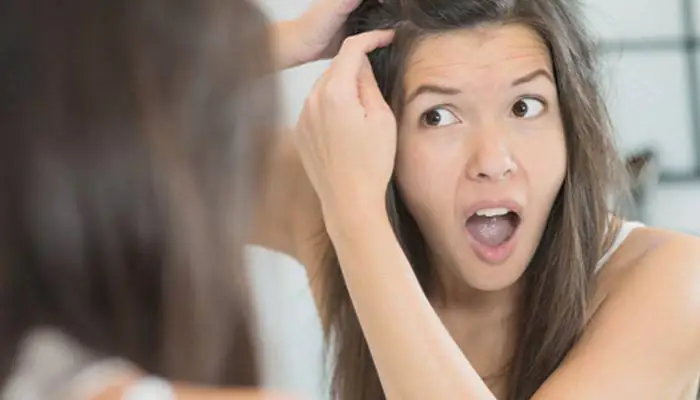
Why do acne appear on the head?
Bacteria that manage to overcome the hydrolipid film, which is one of the layers of the skin and performs a protective function, penetrate into deeper layers and cause inflammation, which manifests itself as acne. The painful discomfort that accompanies even the smallest pimple intensifies when combing your hair. Before you start fighting inflammation on the skin, you need to understand the reasons for their occurrence. They can be very diverse, both internal and external. For convenience, the main causes of acne on the head are divided into several categories.
- Unstable hormonal levels provoke skin rashes in women, this happens especially often when the menstrual cycle is disrupted.
- A more global cause of female rashes in the form of acne on the head can be polycystic ovary syndrome: when the organ works in an enhanced mode, the oiliness of the skin increases.
- In men, acne on the scalp appears when testosterone levels, a sex hormone, change.
- Frequently occurring stressful situations lead to problems with the adrenal glands, then a failure in the body’s well-functioning system results in acne rashes on the skin in the hair area.
- Taking some medications can cause a reaction in the body in the form of a skin rash.
- With colds and hypothermia, purulent pimples and boils may appear throughout the body, including on the head.
- The simple reason for the appearance of acne on the scalp may be trivial, hidden in the wrong choice of shampoo, the composition of which has an individual intolerance.
- Low-quality, highly chlorinated water dries out the skin, the sebaceous glands begin to work hard, and pustular rashes appear in the scalp.
- Using synthetic pillows for night rest. The scalp does not breathe, sweats, inflammation and acne form.
- Very frequent or, conversely, rare washing of the hair.
Young children also suffer from the rash, although most are kept in ideal, clean conditions. In newborn babies, the cause of acne can be the incorrect diet of a nursing mother. Older children, preschool or primary school age, suffer from allergies to certain foods or even toys if they are made from low-quality materials. Parents need to pay very close attention to any changes in the surface of the child’s skin, especially when it comes to rashes in infants.
In girls and boys who have reached adolescence, the appearance of acne is the main problem that is visible to the naked eye. Hormonal surges cause rashes on the face, temples, and back of the head, accompanied by itching and increased sensitivity. Increased work of the sebaceous glands clogs the space near the hair follicles, causing inflammation. As a result, red or purulent pimples appear.
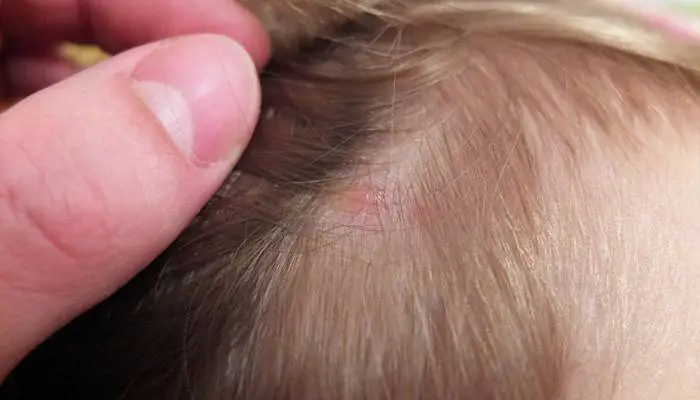
The main types of acne and the reasons for their manifestation
Any person, regardless of age, encounters trouble in the form of rashes. Pimples on the head, different in appearance, have their own distinctive features, which are worth dwelling on in a little more detail. At the first sign that any acne has appeared on your head, you need to pay attention to it and prevent the rash from spreading or worsening.
Small white bumps on the skin that resemble small grains are located under the top layer of the skin. Closed comedones, or popularly called “comedos,” occur when the sebaceous glands are blocked by keratinized skin particles secreted by fat and sweat. Under the created plug, bacteria begin to actively multiply, creating a white nodule. This phenomenon of rash often occurs in adolescents, but even in adulthood, it is possible to encounter lumps on the skin that can periodically itch.
When small red spots appear on the skin, it is rarely a cause for concern. Inflammation develops in waves, sometimes intensifying, sometimes subsiding. During an exacerbation, a white purulent tubercle with a thickening under the skin appears in the center of the red pimple papule. Improper metabolism of the body and diseases of the gastrointestinal tract are the main reasons for the appearance of red pimples.
An open comedon has a black head, its structure and reason for its appearance is very similar to a white pimple, but is located in the upper part of the pore. Clogged with a layer of released fat, epithelial remnants, the pore or hair follicle is filled with a white-yellow substance, which, when oxidized under the influence of oxygen, darkens and becomes a black dot. As long as the area with blackheads does not become infected, they do not cause any trouble other than their unsightly appearance.
Rashes containing pus always not only look unpleasant, but are also very painful. Deep pimples may have a dense cystic base, then the color has a bluish tint. Red pustules contain a purulent ball inside. The cause of purulent rashes is the use of steroids, hormonal imbalance, or an infection that has entered the pores of the skin. Only a qualified physician after an examination can determine the source of the problem.
The connective tissue (dermis), located between the hypodermis and epidermis, contains sweat and sebaceous glands, which, when clogged, form dense nodules that are painful to the touch. When bacteria enter the connective tissue, inflammation increases. The large size of pimples on the head indicates that the subcutaneous follicle has already burst and some amount has entered the dermis layer. If your scalp hurts on the top of your head, check to see if a new pimple has started to form there.
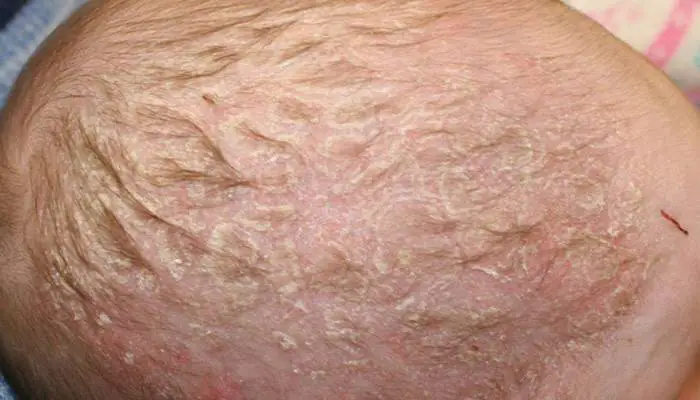
Which doctor should I contact?
When rashes on the scalp appear systematically and cause pain and discomfort, you should visit a professional dermatologist. After conducting the necessary laboratory tests, establishing the cause of the rash, inflammation on the head, the dermatologist prescribes treatment himself or advises seeking advice from an allergist, endocrinologist, therapist, or neurologist. Getting rid of the main cause of acne will speed up the results of properly prescribed treatment.
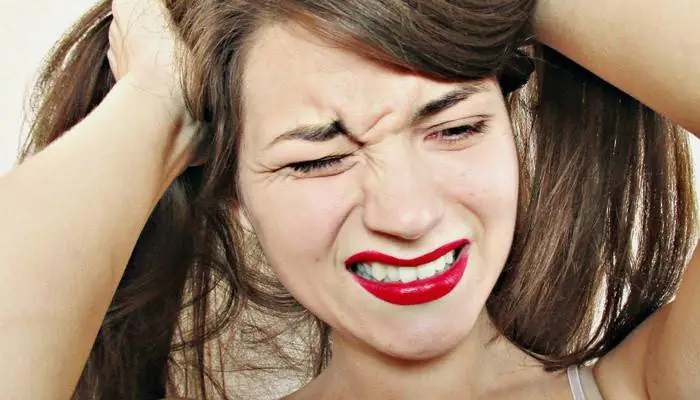
How to get rid of acne on the scalp
How to cure acne that periodically or constantly appears on the part of the head covered with hair can only be determined by a doctor who has a complete picture of the disease and knows the cause of the rash. Self-treatment can lead to worsening of the condition. Combining medication and physiotherapeutic methods gives positive results in the fight against inflammation. Longer treatment gives lasting results after recovery, but subject to the correct healthy diet and proper care for problem skin.
Treatment with medications prescribed by a doctor against acne should be divided into several groups:
- Antiseptics. The most gentle effect on inflamed skin is antiseptic agents. The disinfecting effect of ointments, suspensions, and gels disinfects the top layer of skin, preventing the appearance of new rashes, thanks to zinc, which is part of some preparations. You need to apply directly to the pimples themselves and a small radius of the skin around them. The list of common drugs includes: “Ichthyol ointment”, “Tsindol”, “Metrogil”, “Kvotlan”, “Skinoren”, “Effezel”, “Aknebay”, calendula tincture.
- Adsorbents. The task of these drugs is to absorb all the toxins from the skin released by acne, start the body's metabolism in an optimal mode, and regulate the functioning of the sebaceous glands. Doctors prescribe Polysorb, brewer's yeast, Laktofiltrum.
- Antibiotics. In more complex cases of skin inflammation, the doctor prescribes medications from the antibiotic group in the form of ointments for external targeted use, such as Levomekol for acne and oral tablets to enhance the radical effect. They also help: ointment “Tetracycline”, “Metacycline”, “Doxycycline”, “Zinerit”, “Baziron AS”, “Erythromycin”, “Clindamycin”, “Monocycline”.
To ensure that the focus of skin inflammation occurs in a comprehensive manner, physiotherapeutic procedures against rashes are prescribed. These include:
- Cryotherapy. Local use of low temperature with liquid nitrogen applied to areas of greater acne accumulation on the skin. Cold treatment helps stimulate blood vessels, improves blood circulation, and activates the immune system.
- Laser therapy. The mechanisms that provoke the occurrence of acne are blocked. When a laser beam hits a pimple, the cell is partially destroyed, the ducts of the sebaceous glands are released, and bacteria and fungi that cause inflammation are killed.
- Darsonvalization. With the help of the Darsonval apparatus, the work of the sebaceous glands is regulated, pores are narrowed, blood circulation is improved, skin cells are restored, and inflammation is relieved.
- Ultrasound vibration therapy. Improves metabolic processes at the skin cell level, blocks the proliferation of bacteria.
- Ultraviolet. Treatment of the scalp with ultraviolet rays dries inflamed areas of the skin and kills bacteria.
Treatment of inflammation of the scalp using folk methods at home can achieve good positive results, but on condition that this is part of a comprehensive treatment. Any of the proposed folk remedies against inflammation of the scalp should be used only after consultation with a doctor. We present more popular and effective non-traditional methods of fighting acne at home:
- Apple vinegar. After washing your hair, mix apple cider vinegar and water in equal proportions and wet your scalp.
- Honey with cinnamon. Mix two tablespoons of honey with ground cinnamon 2:1. Apply the resulting mass to the hair and scalp, wrap in a warm towel for 20-30 minutes. Rinse with warm water.
- Tea tree oil. Being a good antiseptic, the oil will help get rid of acne under the hair if you add a little of it to your shampoo.
- Sea salt for acne. A warm, strong saline solution is applied with a swab to the inflamed areas of the skin.
- Pumpkin. Grate the vegetable until mushy. Apply to the head as a mask for 15-20 minutes. Accelerates the process of acne maturation and dries out inflammation.
- Hop. The hop cones are washed and boiled for 3-5 minutes. The broth is infused for about an hour, filtered, and moistened with pimples.
- Celandine. Pour three or four tablespoons of dry celandine into 0.5 liters of boiling water. After 2 hours, strain. Make lotions using a cotton swab. Freshly picked fresh celandine will cauterize the resulting pustular pimple with its juice.
- Plantain. Wash and mash plantain leaves. Distribute the pulp, along with the resulting juice, which has an antiseptic effect, over the surface of the head for 20-25 minutes. Rinse off with warm water.
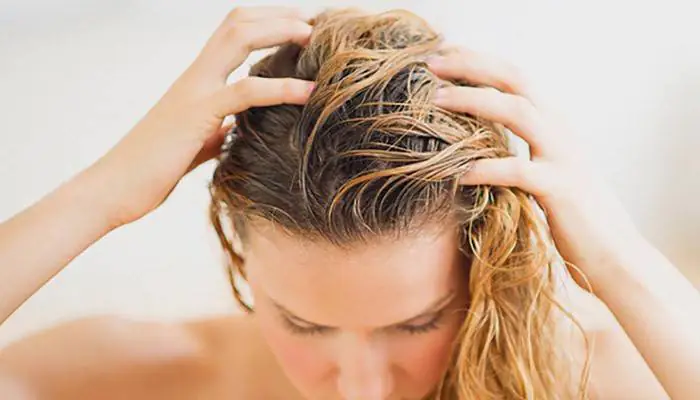
Prevention methods
Knowing the reason why acne occurs on the surface of the head, it is easier to prevent this unpleasant, painful phenomenon. The main axioms for those who suffer from skin inflammation should be:
- proper healthy eating;
- maintaining personal hygiene;
- timely disinfection and disinfection of skin areas at the first appearance of signs of small acne;
- selection of high-quality cosmetic products;
- a calm lifestyle without stressful situations;
- regular medical examinations by doctors.
Pimples form not only on the face or body, but also on the head in the hair. The most interesting thing is that these rashes appear more in men, and of different ages, and at 18, 30, 40, and 50 years old. They are usually localized on the occipital, scalp, back parts of the head, as well as on the temporal areas.
Despite the fact that pimples on the hair are barely noticeable, and at first glance the problem of their appearance is not as depressing as their appearance on other parts of the body, it can cause a lot of inconvenience for a man. They can itch and itch, and even cause severe pain when scratched.
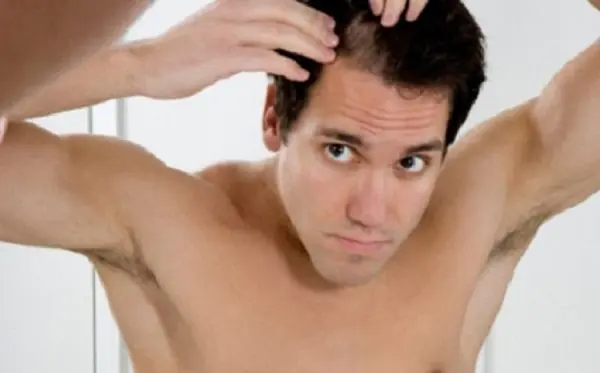
Fortunately, there are many folk remedies that can help get rid of them. And they all do not contain any harsh chemicals or other ingredients that often do more harm to your hair and scalp than good. But first, let's look at what causes acne in the hair and how it forms.
Causes of acne on the head in men
Pimples on the head form in the same way as on the face and other parts of the body. Our skin produces an oily, fatty substance called sebum, which keeps it smooth and naturally hydrated.
Sebum is produced by the sebaceous glands, which are located just below the surface of the skin. It makes its way to her through:
1) hair follicles (as shown in the figure below) or
2) through pores on hairless areas of the skin (for example, on the face).
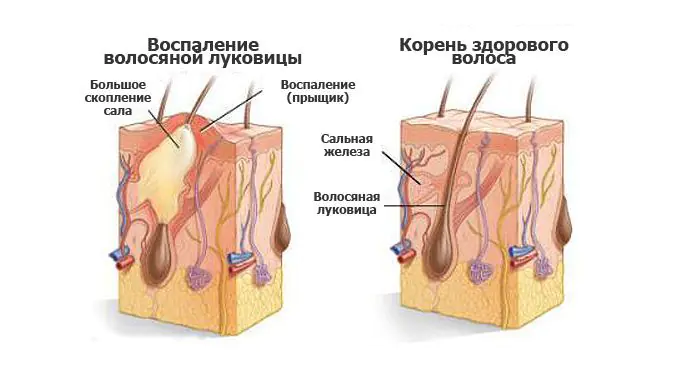
For various reasons, some men produce more sebum. And generally, the more sebum the skin creates, the more oily it becomes, causing acne.
- Hormonal changes are the most common cause of their occurrence on the scalp. For example, they are often observed in teenage boys due to an increase in the production of sex hormones. During this period, there is increased sebum production, causing clogged skin pores. All this increases the risk of acne.
- Using shampoos or other hair products that contain many chemicals and fragrances. Any type of allergy can cause a rash, so it is advisable to do a test to detect an allergic reaction to any cosmetic products.
- Constant mechanical stress: wearing tight hats or the habit of scratching the skin.
Studies show that smokers are more likely to develop acne than non-smokers.
- They can also appear as a result of taking steroid-type medications (anabolics, corticosteroids, etc.).
- Pimples in the hair can also be caused by internal causes, such as immune disorders, digestive or liver problems resulting from the use of antibiotics.
- Eating unhealthy foods that are deficient in nutrients. Carbonated drinks, fried foods, pizza, sweets and alcohol put stress on the liver, the main filter of our body.
- Constipation is one of the most common causes of acne in adults. When the body is overloaded with toxins, it begins to dump waste into the skin, forming skin rashes.
- Other causes of this skin defect can be stress, fatigue and depression.
Treatment of acne in hair with folk remedies
Men can get rid of them using proven remedies that are easy to prepare at home.
Apple vinegar
Apple cider vinegar is one of the most popular folk remedies to help get rid of acne. The malic acid contained in vinegar has disinfecting properties and inhibits the production of sebum. Another benefit of vinegar is that it helps restore the pH balance of the skin, which is necessary to protect it from germs, bacteria and pollution.
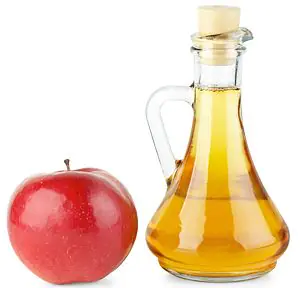
You will need:
- 1/4 cup apple cider vinegar
- 1 tablespoon raw honey (optional)
- 1 glass of water
Preparation:
- Simply mix vinegar, honey and water and massage your scalp with this mixture.
- Leave for 2-3 minutes, then rinse thoroughly with water.
Aloe vera
In Ayurveda, aloe vera is traditionally used to treat acne because this plant has anti-inflammatory and antibacterial properties. Apart from this, aloe vera nourishes the scalp and hair follicles well, which promotes healthy hair growth and also relieves redness and itching.
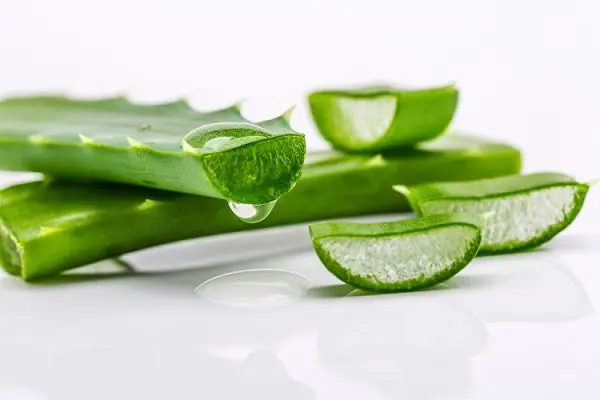
You will need:
Preparation:
- Apply aloe vera juice to the scalp and keep it for 15-30 minutes.
- Then rinse with water.
It will also be beneficial to take 1 teaspoon of aloe vera juice in the morning. It is best to use fresh juice extracted from the leaves. If you buy it from a store, make sure it contains minimal additives.
Tea tree oil
This oil is often used for problematic scalp. In fact, it acts as an antiseptic that disinfects pores and dries out pimples quickly. In addition, it kills bacteria and also relieves itching. Reviews after using the oil are usually positive.
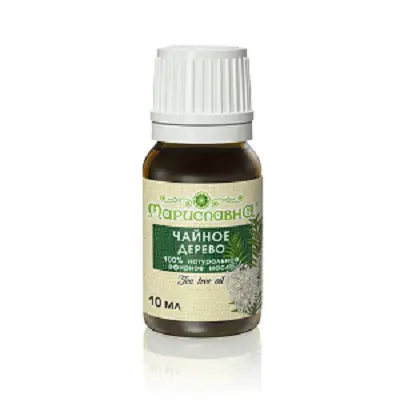
- First, mix 5 drops of tea tree oil with 2-3 tablespoons of olive oil.
- Then apply to your head and massage.
- Leave on for 1-2 hours and rinse off.
- Repeat this procedure once a day.
- When washing your hair, add 2-3 drops of tea tree oil to the shampoo you use.
- Leave this shampoo on for 3-5 minutes, then rinse thoroughly.
Garlic
Garlic effectively treats purulent acne on the scalp. It will also soothe and speed up the healing process.

- Pour 3 cups of clean water into a small saucepan and add 4-6 peeled cloves of garlic.
- Boil for 5 minutes and then let cool.
- Wash your hair with the resulting decoction and wait 10 minutes.
- Then rinse with water.
- This process should be repeated once a day.
Honey
Honey is a natural antibiotic, plus it nourishes and moisturizes the skin. Like honey, cinnamon has antimicrobial properties, so it also kills acne-causing bacteria.
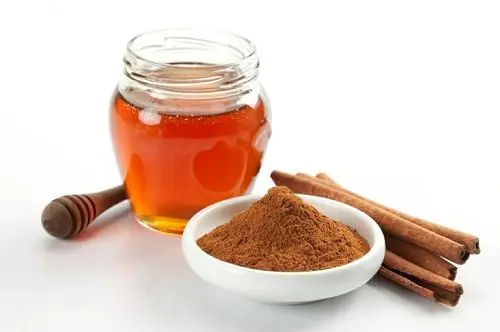
You will need:
- 1/2 teaspoon cinnamon
- 2 tablespoons honey
Preparation:
- Mix honey with cinnamon.
- Apply this mixture on your head for half an hour, then rinse with warm water.
- This remedy will help cure red, painful pimples on the scalp in men.
Sugar and honey scrub
Few people know that regular sugar is also an excellent antiseptic. In earlier times it was used to treat cuts and wounds. A scrub made from sugar and honey gently exfoliates the scalp and helps eliminate pimples in the hair. The sugar particles in this scrub quickly dissolve and therefore do not damage the skin.

You will need:
- 1 teaspoon sugar
- 2 tablespoons honey
Preparation:
- Mix sugar and honey.
- Gently scrub your skin in a circular motion and leave on for 5 minutes.
- Then rinse with warm water.
Also, don’t forget that eating a healthy, balanced diet plays a very important role in treating acne. External treatment will not solve the problem. It is important to eat foods that heal your skin from the inside.
- Vitamin A is essential for healthy skin. So include sweet potatoes, pumpkin, carrots, broccoli, dark green vegetables, apricot, liver and peppers in your diet.
- Eat more beets, which are an excellent liver cleanser.
- Include more fresh vegetables and fruits in your diet, such as peach, apricot, watermelon, raisins, plums, celery. All are rich in antioxidants, fiber, and essential vitamins and minerals.
- Omega-3 fatty acids help restore and rejuvenate the skin. They contain flax seeds, walnuts, pumpkin seeds, salmon, sardines and mackerel.
- In addition, it is important to consume zinc-containing foods. These include pumpkin seeds, sesame seeds, cashews, peanuts, peas, lamb, turkey, lentils, chickpeas and shrimp.
- It's good to eat probiotics. They have a good effect on the intestinal microflora, improve digestion and improve the absorption of nutrients.
In addition to using various folk remedies, the following simple tips will also help men fight acne and improve their overall health and tone.
- Take a course of vitamins or brewer's yeast. This will help cleanse the body of toxins that cause such skin problems. Never squeeze pimples on your head. This will cause the rash to spread, causing pain and itching.
Use a shampoo that contains salicylic acid and wash your hair at least twice a week. Washing them every day is not recommended as this can cause dry scalp and dandruff.
- Men with oily hair should not use conditioner, as this will only worsen the problem.
- Wash your combs regularly with soapy water.
- Wash your hats often.
- Avoid stressful situations.
- Protect your head from direct sunlight.
- Don't abuse alcohol.
- Avoid eating pepper, hot sauces and spices.
- Reduce your salt and sugar intake.
- Strengthen your immune system.
- Drink 7-8 glasses of water a day, as well as green tea and fresh juices.
Acne on the scalp in men usually appears in a mild form and can be dealt with at home. But if they do not go away for a long time, then you should definitely consult a dermatologist.



